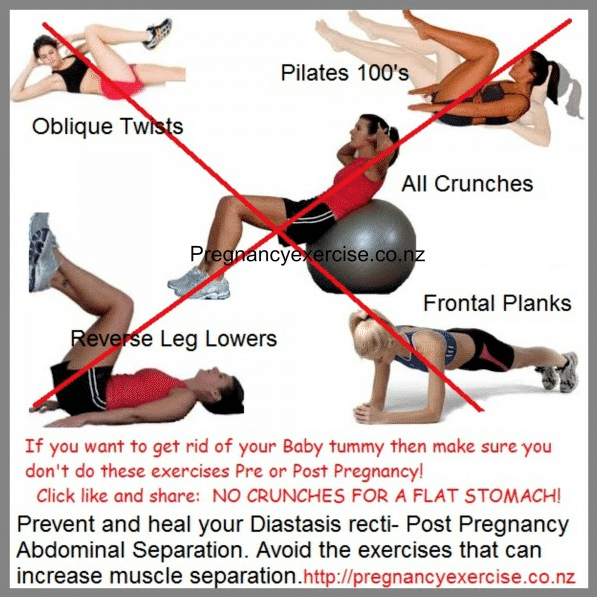There are many inaccurate blogs, videos and social media posts on the web and I often hear how women still feel frustrated that there is a lack of correct information available to them about Diastasis Recti. I’ve found some great info from New Zealand who explain it really well.
1: Diastsais Recti (DR) goes by many names;
It is also known as Diastasis Rectus Abdominus (DRA) which is how most physiotherapists refer to it and (DRAM).
Diastasis means separation and during pregnancy we refer to the Diastasis of the rectus abdominal muscles.
Even though it is the rectus abdominal muscles that separate it’s actually the connective tissue, the Linea Alba that holds the rectus muscles together that actually widens.
How much the Linea alba has to stretch to accommodate a pregnancy will generally determine the width and depth of postnatal separation.
Its important that you accurately assess your Diastasis about 6 weeks post birth to determine the size. Testing too soon after birth can be inaccurate as extra fluid and a contracting uterus can inhibit an accurate test result. We now know that assessing the depth and tension of the connective tissue (the linea alba) is far more important than just recording a width separation (this way of measuring is old school).
Diastasis is naturally occurring during pregnancy
Most women will have some degree of separation towards the end of a pregnancy. A Diastasis is naturally occurring and often needs to happen to make room for a baby. But its the size and then depth of the separation that can become problematic post birth if not managed correctly. Women will often not feel the separation occurring during pregnancy.
If your Diastasis has not closed to optimum 8-12 weeks post birth then specific strengthening exercises need to be done, posture management and good nutrition are required to help healing.
Boissonnault & Blaschak (1988) found that 27% of women have a DRA in the second trimester and 66% in the third trimester of pregnancy. 53% of these women continued to have a DRA immediately postpartum and 36% remained abnormally wide at 5-7 weeks postpartum. Coldron et al (2008) measured the inter-recti distance from 1 day to 1 year postpartum and note that the distance decreased markedly from day 1 to 8 weeks, and that without any intervention (e.g. exercise training or other physiotherapy) there was no further closure at the end of the first year. – See more at:https://dianelee.ca/article-diastasis-rectus-abdominis.php#sthash.E3meFiky.dpuf
3: You CAN reduce and prevent Diastasis during pregnancy

You can heal many years post birth
It is possible to heal a separation many, many years post birth. I personally have trained women who are 10+ years postnatal and they have noticed a big difference in their core strength, tummy appearance and posture! So its never to late to improve.
5: Only 5% of women need surgery to correct
It frustrates me that in many posts I see about DR on Facebook and Instagram that there are often comments which suggest ‘surgery is the only option’. This is definitely not true and the latest finding from Diane lee certainly do not suggest this.
Do you need surgery?
If you have been trying to heal your muscle separation for more than 12 months, have finished breastfeeding and your separation is not changing and you also find it hard to create any tension of the linea alba then you should see a Womens health Physiotherapist for an ultra sound. An ultra sound will show you in detail if the connective tissue (linea alba) has stretched beyond healing with rehabilitation exercises, posture management and nutrition.
6: How you breathe and activate your core muscles is important
Learning how to breath and activate the 4 core muscles (Diaphragm, Transverse Abdominus (TA), Pelvic Floor (PF) and Multifudus) correctly both during and beyond pregnancy will help to reduce separation during pregnancy and then aid healing post birth.
 Breathing is important not only because we need do it all the time but we use our core muscles to breathe! If we are not breathing and recruiting the core muscles sufficiently then the Transverse Abdominal muscles are not contracting optimally. Therefore incorrect breathing and core muscle activation will not assist to close a DR.
Breathing is important not only because we need do it all the time but we use our core muscles to breathe! If we are not breathing and recruiting the core muscles sufficiently then the Transverse Abdominal muscles are not contracting optimally. Therefore incorrect breathing and core muscle activation will not assist to close a DR.
Finally, if you want to help your tummy be vigilant about your posture and rehab exercises to prevent the separation increasing and to not worry about the fact that’s its not closing as quickly as you like. -remember sometimes it just wont close so focus on working the deep abs to maintain strength in the mid line. Just ask me about the breathing exercise and some safe ones with the band or ask about my Core & Restore course I run.

